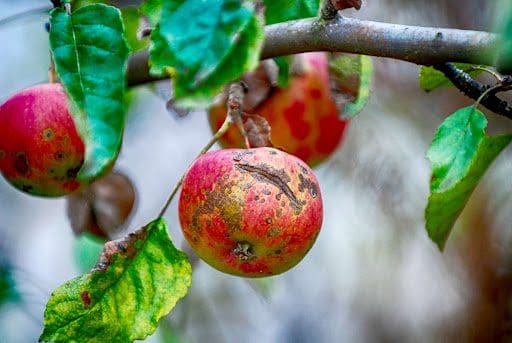Are you noticing brown spots on the leaves or fruit of your apple or crabapple tree? If you are, it is likely apple scab which is a disease caused by a fungus called Venturia inaequalis. Apple scab will ruin the aesthetic value of the tree, and ruin any fruit it produces, the two best things about apple trees! Luckily, we can help the situation; here’s some information about apple scab and what we recommend.
How the Venturia Inaequalis Spreads
The fungus resides in fallen leaves and fruit that are infected. During the spring, the cool and wet weather will cause the fungus to grow and release its spores. The spores will then spread to apple tree leaves and fruit via wind and splashing water. After that, the spores will germinate on wet leaves and fruit, and scabs will begin to form within a month. Once the scabs reach maturity, they will release more spores that will then spread to other trees where the process starts over.
Apple Scab Symptoms to Look For
Keep an eye out for apple scab symptoms In the spring, when it is the optimal temperature for the fungus to spread. Symptoms include the following:
- Light brown circular spots form on the fruit and leaves
- Dark brown scabs sunken into the fruit
- Repeat infections will cause leaves to yellow and drop early
- Young infected fruit they may fall off early, while mature fruit could develop infection once in storage
What We Recommend
- Regularly remove any fallen leaves or fruit, especially over winter, as they may contain the fungus
- Pruning to allow light and air movement throughout the canopy. This will help prevent infection by keeping the leaves dry
- In the spring, we can apply 2-3 fungicide spray treatments at 2 week intervals
- The first treatment must be scheduled during early-mid spring for best results


